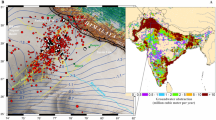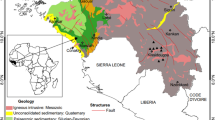Abstract
DESTRUCTIVE earthquakes following the filling of large reservoirs at Kremasta in Greece1 and at Koyna in India2,3 have revived interest in reservoir-induced seismicity. Seismologists are eager to learn what information may be gleaned about the details of earthquake mechanism, and engineers are concerned to locate structures in areas where the risk of damage by induced earthquakes is least.
This is a preview of subscription content, access via your institution
Access options
Subscribe to this journal
Receive 51 print issues and online access
$199.00 per year
only $3.90 per issue
Buy this article
- Purchase on Springer Link
- Instant access to full article PDF
Prices may be subject to local taxes which are calculated during checkout
Similar content being viewed by others
References
Galanopoulus, A. G., Ann. Géol. Pays Helleniques, 18, 281 (1967).
Narain, H., and Gupta, H., Nature, 217, 1138 (1968).
Rothé, J. P., New Sci. 39, 75 (1968).
Author information
Authors and Affiliations
Rights and permissions
About this article
Cite this article
ADAMS, R., AHMED, A. Seismic Effects at Mangla Dam, Pakistan. Nature 222, 1153–1155 (1969). https://doi.org/10.1038/2221153a0
Received:
Issue Date:
DOI: https://doi.org/10.1038/2221153a0
Comments
By submitting a comment you agree to abide by our Terms and Community Guidelines. If you find something abusive or that does not comply with our terms or guidelines please flag it as inappropriate.



